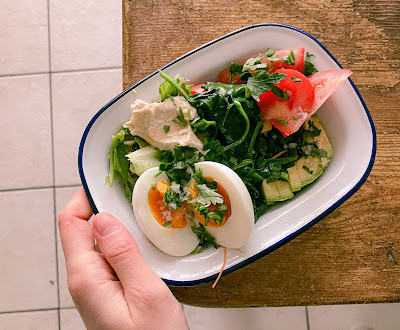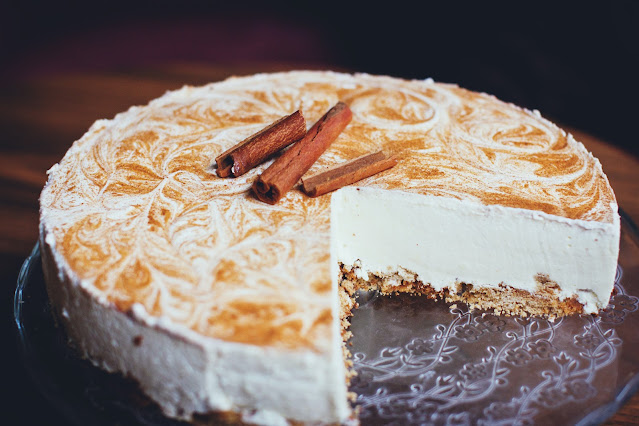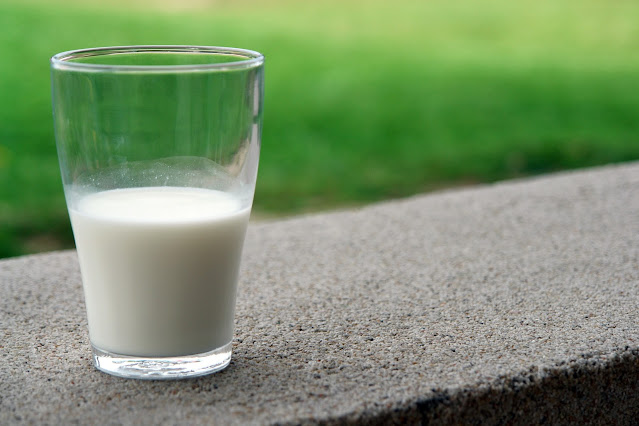Lose Weight with These Ketogenic Diet Foods Allowed
The ketogenic diet has been gaining in popularity over the
past few years. This way of eating is based on a very low carbohydrate,
moderate protein, and high-fat diet. When done correctly, the ketogenic diet
can help you lose weight and improve your health.
One of the best things about the ketogenic diet is that you
can eat a variety of foods. There are plenty of ketogenic diet foods allowed,
including meat, poultry, seafood, eggs, cheese, nuts, and seeds. You can also
enjoy healthy fats like olive oil and avocado.
In addition to a wide variety of foods to choose from, the
ketogenic diet is also very customizable. You can adjust the amount of
carbohydrates and protein you eat to fit your own personal needs. This makes
the ketogenic diet a great choice for people who want to lose weight or improve
their health.
Foods To Eat On The Ketogenic Diet
The Ketogenic diet is a low-carb, high-fat diet that can
help you lose weight. It can also help with conditions such as epilepsy,
diabetes, and Alzheimer’s disease. The ketogenic diet consists of foods that
are high in fat and low in carbohydrates. These foods include meat, fish, eggs,
butter, cheese, nuts, and seeds. You can also eat berries and other fruits.
However, you should avoid sugary drinks and fruit juices.
Foods To Avoid On The Ketogenic Diet
When starting the ketogenic diet, it’s important to know
which foods are allowed and which ones to avoid. Here is a list of the top five
foods to avoid on the ketogenic diet:
1.
Grains – Grains are high in carbs and should be
avoided while on the keto diet. This includes wheat, rye, barley, oats, quinoa,
rice, and corn.
2.
Sugary drinks – Sodas, fruit juices, energy
drinks, and sweetened coffee or tea should all be avoided on the keto diet.
These drinks are packed with sugar and carbs that will kick you out of ketosis.
3.
Starchy vegetables – Potatoes, sweet potatoes,
parsnips, carrots, and other starchy vegetables are high in carbs and should be
avoided while following a keto diet.
What To Eat When You're First Starting The Ketogenic Diet
When starting the ketogenic diet, you may be wondering what
foods are allowed. There are a few things to keep in mind when starting out.
The first is to make sure you are eating enough protein. Your body needs
protein to help with ketosis. The next thing to keep in mind is to avoid
high-carbohydrate foods. These include things like bread, pasta, and sugary
drinks. Instead, focus on eating healthy fats and proteins. Some good options
include salmon, avocados, and chicken breasts. By following these tips, you can
ensure a successful start to the ketogenic diet.
The Best Keto Foods To Eat
When starting the ketogenic diet, it's important to know
which foods are allowed and which foods to avoid. Many people think that they
have to give up all of their favorite foods when starting this diet, but that's
not true. There are many great keto-friendly foods that you can enjoy while on
this diet.
Some of the best keto foods to eat include: meats like beef,
pork, lamb, chicken, and fish; low-carb vegetables like broccoli, cauliflower,
and green beans; healthy fats like olive oil, coconut oil, and avocado; and
nuts and seeds. You can also enjoy moderate amounts of low-carb fruits like
berries and melon.
What You Can And Can't Eat On A Ketogenic Diet
If you're on the ketogenic diet, you may be wondering what
you can and can't eat. There are a few things to keep in mind when following
this diet.
You Can Eat Everything Below:
Meat:
Meat is a key part of the
ketogenic diet. Beef, pork, lamb, and chicken are all good sources of protein
and healthy fats. However, not all meats are created equal. You should avoid
processed meats and instead focus on eating unprocessed, grass-fed meat.
Grass-fed meat is higher in omega-3 fatty acids and lower in omega-6 fatty
acids than conventionally raised meat. This is important because getting the
right balance of omega-3 and omega-6 fatty acids is crucial for health on the
ketogenic diet.
Poultry:
When following a ketogenic diet,
not all poultry is created equal. While chicken and turkey are both allowed on
the keto diet, they have different effects on blood sugar. Chicken is a
moderate-GI food, which means it causes a moderate rise in blood sugar levels
after eating. For this reason, chicken is not recommended for people with
diabetes or prediabetes. However, turkey is a low-GI food, so it does not cause
as much of a spike in blood sugar levels. As a result, turkey is a better
choice for people who are following a ketogenic diet.
Fish:
Fish is a great source of protein
and healthy fats, making it a perfect food for the ketogenic diet. There are
many different types of fish to choose from, all of which are packed with
nutrients. Some good options include salmon, tuna, trout, and mackerel. Fish is
also a good source of omega-3 fatty acids, which are beneficial for maintaining
overall health and preventing chronic diseases. When choosing fish for the keto
diet, be sure to go for varieties that are low in carbs and high in protein and
healthy fats.
Eggs:
One food that is allowed on the
ketogenic diet and is beneficial for breakfast is eggs. Eggs are a great source
of protein and can be cooked in many different ways. They can be boiled,
scrambled, or even made into an omelet. Adding vegetables to your eggs can also
help to add some extra nutrients to your breakfast.
Cheese:
Cheese is a high-fat,
low-carbohydrate food that is allowed on the ketogenic diet. Cheese is a good
source of protein and calcium, and it has a relatively low calorie count.
Choose cheeses that are high in fat and low in carbs, such as brie, camembert,
cream cheese, feta, goat cheese, gruyere, heavy cream, jack cheese, neufchâtel
cheese, parmesan cheese, ricotta cheese, roquefort cheese and string cheese.
Cream:
There are many foods that you can
eat on a ketogenic diet, and cream is one of them. In fact, cream is a great
source of healthy fats, and it can be used in many different recipes. There are
many different types of cream, including heavy cream, light cream, and
half-and-half. All of these creams are high in fat and low in carbs, making
them perfect for the keto diet. Cream can be used in place of milk or other
high-carb dairy products in recipes, or it can be added to coffee or tea for a
creamy beverage.
Butter:
Butter is a type of dairy product
that is made from the cream of cows' milk. It is often used as a spread on
bread, and can also be used in cooking. Butter is high in saturated fat, but it
also contains some beneficial nutrients, including vitamin A, vitamin D, and
vitamin E.
Nuts:
The ketogenic diet is a high-fat, moderate protein, and low-carbohydrate diet. When followed correctly, it can be very effective in weight loss. One of the best things about the keto diet is that you can eat a variety of foods, including nuts. Nuts are a great source of healthy fats, protein, and fiber. They are also low in carbohydrates, making them a perfect food to eat on the keto diet.
Seeds:
Seeds are a great source of
healthy fats, proteins, and fiber. They're also low in carbohydrates, making
them a perfect food for the ketogenic diet. There are many different types of
seeds, each with its own unique nutrients and health benefits. Here are some of
the best seeds to eat on the keto diet:
Sunflower Seeds: Sunflower seeds are one of the most popular types of seeds. They're high in antioxidants, vitamin E, and B vitamins. They're also a good source of protein and fiber.
2.
Pumpkin Seeds: Pumpkin seeds are another popular
seed that's high in antioxidants and minerals like magnesium, zinc, and iron.
They're also a good source of protein and fiber.
3. Sesame Seeds: Sesame seeds are high in calcium,
magnesium, and zinc.
Broccoli:
As a ketogenic diet follower, you
may be wondering if broccoli is allowed. The answer is yes, broccoli is a great
vegetable to eat on the keto diet. It's low in carbs and high in fiber, making
it a perfect food for those who are trying to stick to a keto meal plan.
Broccoli can be eaten cooked or raw, making it a versatile food choice. While
there are many different ways to prepare broccoli, some of our favorite recipes
include roasted broccoli with garlic or steamed broccoli with lemon butter
sauce. So next time you're looking for a healthy and delicious keto-friendly
dish, be sure to add some broccoli to the menu!
Cauliflower is one of the
vegetables that is allowed on a ketogenic diet. It is low in carbohydrates and
has many health benefits. Cauliflower can be eaten raw or cooked. It is a good
source of dietary fiber, vitamin C, vitamin K, and B vitamins.
Kale is a leafy green vegetable
that is a member of the cruciferous vegetables family. It is low in calories
and carbohydrates and high in fiber, vitamins, and minerals. Kale is a good
source of vitamin C, vitamin A, vitamin K, potassium, and manganese. It
contains anti-inflammatory phytonutrients and has been shown to have
cancer-fighting properties. Kale can be eaten raw or cooked. It is a popular
ingredient in salads and smoothies and can also be added to soups and stews.
Kale is a healthy food choice for people following the ketogenic diet.
Spinach:
Spinach is a leafy green vegetable
that is low in carbohydrates and high in fiber. It is also a good source of
vitamins A, C, and E, as well as minerals such as potassium and magnesium.
Spinach can be eaten raw or cooked. It can be added to salads or smoothies, or
it can be cooked in dishes such as omelets, pasta dishes, and casseroles.
Salad greens are a great way to
increase your intake of vegetables while following a ketogenic diet. There are
many different types of salad greens, so you can find something to fit your
taste. Some of the most popular types of salad greens include romaine lettuce,
spinach, arugula, and kale.
How To Follow A Ketogenic Diet Safely
A ketogenic diet is a diet that is low in carbohydrates and
high in fats. When following a ketogenic diet, it is important to do so safely.
Here are a few tips on how to follow a ketogenic diet safely:
1.
Make sure to drink plenty of water and stay
hydrated. Dehydration can occur when following a ketogenic diet, so be sure to
drink plenty of water throughout the day.
2.
Eat plenty of fiber. Eating fiber can help keep
you regular and avoid constipation while following a ketogenic diet.
3.
Avoid eating too many processed foods. Processed
foods often contain unhealthy ingredients and chemicals that can be harmful
when following a ketogenic diet.
4.
Get enough protein. Protein is essential when
following a ketogenic diet and can help maintain muscle mass and avoid losing
weight too quickly.
Keto Food List For Beginners
If you are new to the ketogenic diet, you may be wondering
what foods you can eat. This list of keto-friendly foods will help you get
started.
The keto diet is a high-fat, low-carb diet that can help you
lose weight. On the keto diet, you eat a lot of healthy fats, moderate amounts
of protein, and very few carbs.
Some good foods to eat on the keto diet include meat, fish,
eggs, dairy products, nuts, seeds, oils, avocado, and low-carb vegetables.
You should avoid eating high-carb foods like grains, fruits,
starchy vegetables, and sugar.
Ketogenic Diet Food List Pdf
If you’re considering a ketogenic diet, you’ll want to
familiarize yourself with the foods you can and can’t eat. Below is a
comprehensive ketogenic diet food list pdf. You’ll find both everyday and
specialty items on the list, making it easy to follow your keto diet plan.
The ketogenic diet is a high-fat, low-carbohydrate diet that
induces ketosis, a metabolic process that burns fat instead of carbohydrates
for energy. The ketogenic diet is effective for weight loss, diabetes
prevention, and epilepsy treatment.
A ketogenic diet food list pdf should include healthy fats
like olive oil, avocados, and nuts; high-quality protein sources like grass-fed
beef and wild-caught salmon; and plenty of fresh vegetables.
Keto Foods To Avoid
You may be wondering what foods to avoid on the ketogenic
diet. The truth is, not all foods are created equal on the keto diet. Some
foods are high in carbohydrates and can knock you out of ketosis, while others
are low in carbs and perfect for the keto diet.
When starting the keto diet, it's important to begin by
eliminating high-carbohydrate foods like bread, pasta, rice, and sugar. These
foods will significantly increase your carbohydrate intake and can knock you
out of ketosis.
Instead, focus on eating healthy fats, protein, and low-carb
vegetables. There are plenty of great options for each category. Healthy fats
include olive oil, avocados, coconut oil, and nuts. Protein sources include
chicken, beef, pork, seafood, eggs, and tofu.
Keto Diet Menu
The keto diet menu is a low-carbohydrate, high-fat diet.
When you're on the keto diet, your body enters a state of ketosis, which is
when it burns fat for energy instead of carbohydrates. The keto diet menu
typically consists of fish, poultry, meat, eggs, cheese, seeds and nuts,
healthy fats and oils, low-carb vegetables and some fruit. You can also enjoy
occasional treats like dark chocolate or red wine on the keto diet menu.
Keto Fruits
A keto diet is a great way to lose weight and feel better,
but it can be hard to stick to it when you're surrounded by unhealthy food
options. However, if you're looking for keto-friendly fruits, there are plenty
of them out there. Here are some of the best ones:
1. Avocados: Avocados are a great
source of healthy fats, and they're low in carbs too. They make a great
addition to any keto diet.
2. Berries: Berries are a great
low-carb snack option, and they're packed with antioxidants too.
3. Melons: Melons are a delicious
way to get some carbs and water into your diet. They're also high in nutrients
like vitamin C and potassium.
Keto-Friendly Groceries
When you’re following the keto diet, it’s important to stock
up on keto-friendly groceries. Here are some of the best keto-friendly foods to
buy:
1. Healthy fats: Choose healthy
fats like olive oil, coconut oil, and avocados.
2. Meat: Stick to lean meats like
chicken and fish.
3. Vegetables: Load up on fresh
vegetables like broccoli, kale, and cauliflower.
4. Low-carb fruits: berries are a
great choice for low-carb fruit lovers.
5. Nuts and seeds: Almonds,
walnuts, and pumpkin seeds are all great options.






